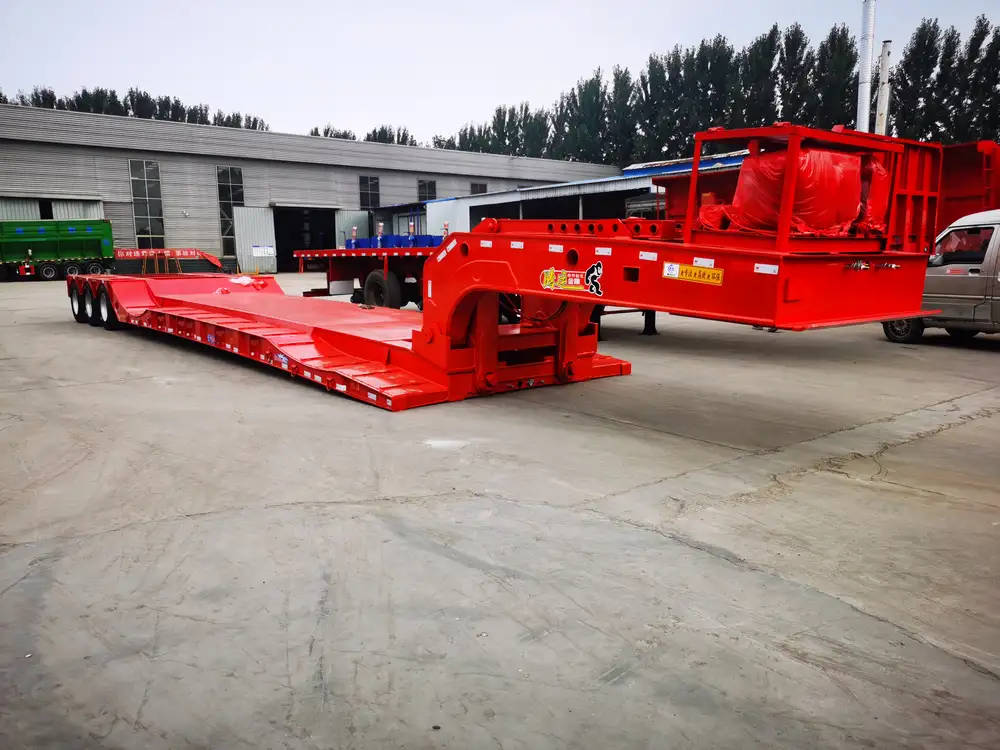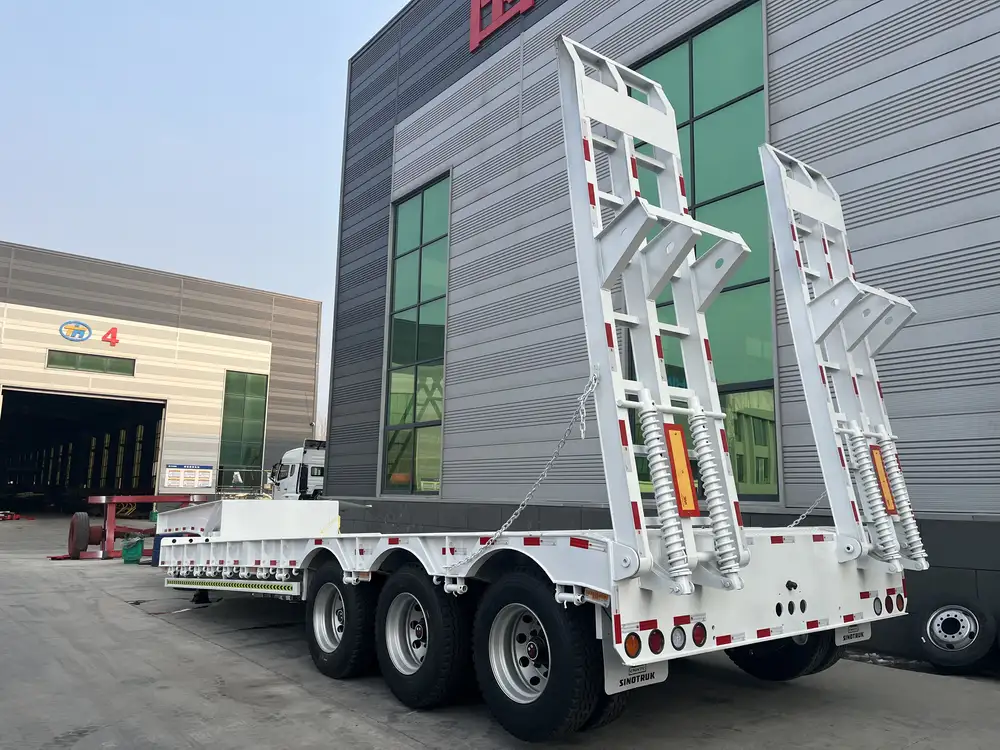When delving into the complexities of the transportation sector, the weight of semi trucks and flatbed trailers emerges as a critical factor that influences myriad aspects ranging from regulatory compliance to operational efficiency. This exhaustive guide seeks to provide in-depth insights into the weight characteristics of these vital components of freight transport.
Minimum and Maximum Weight Regulations
Federal Weight Limits for Semi Trucks
Under federal law, the maximum weight limit for a combination of a semi truck and a trailer is generally set at 80,000 pounds. This limit includes the weight of both the truck and the trailer, as well as the cargo. However, certain components influence the allowable weight:
- Gross Vehicle Weight Rating (GVWR): This is the maximum weight a vehicle can safely carry, combining its weight, the weight of the trailer, and the cargo.
- Axle Weight Limits: To ensure safe distribution and prevent road damage, federal law dictates specific weight limits per axle. For instance:
- Single axle: Maximum of 20,000 pounds
- Tandem axles: Maximum of 34,000 pounds
- Bridge Formula: The design of bridges necessitates specific weight distribution; thus, weight limits may vary based on the distance between axles.

Flatbed Trailer Weight Specifications
Flatbed trailers are diversely used for transporting goods that require easy loading and unloading. The weight of flatbed trailers typically ranges from 3,000 to 10,000 pounds, dependent on the design and materials used. Categories include:
- Standard Flatbed: Usually weighs between 4,000 and 5,000 pounds.
- Heavy-Duty Flatbed: Can weigh upwards of 10,000 pounds, designed to carry heavier loads.
It’s vital to account for the trailer’s weight when calculating the total allowed weight for the vehicle combination; encountering the legal weight limit can lead to fines and operational challenges.
Comparison Table: Weight Regulations
| Category | Weight Limits | Notes |
|---|---|---|
| Gross Vehicle Weight (GVWR) | Max 80,000 lbs | Includes truck, trailer, cargo |
| Single Axle Weight Limit | Max 20,000 lbs | Federal regulation |
| Tandem Axle Weight Limit | Max 34,000 lbs | Federal regulation |
| Standard Flatbed Trailer | 4,000 – 5,000 lbs | Varies by construction and design |
| Heavy-Duty Flatbed Trailer | Up to 10,000 lbs | Built for heavier cargo |
Factors Affecting the Weight of Semi Trucks and Flatbed Trailers
Understanding the various elements that impact the overall weight of semi trucks and flatbed trailers is important for fleet management and compliance. Here’s a breakdown of the most significant factors:

1. Truck Specifications
The specifications of the semi truck itself, including its make, model, and any added equipment, play a significant role in determining its weight. For instance, heavy-duty trucks designed for long-haul purposes will generally weigh more due to robust frame construction and larger engines.
2. Trailer Design and Material
Flatbed trailers can be constructed from different materials such as steel, aluminum, or a composite mix. Each material has distinct weight characteristics:
- Steel Trailers: Heavier and more durable but can increase the overall weight considerably.
- Aluminum Trailers: Lighter, often reducing total weight while maintaining load capacity.
- Design Variations: Trailers with additional features such as side rails or adjustable loading heights will typically weigh more.
3. Cargo Type and Weight
The types of cargo being transported influence overall weight significantly. Different materials have varied densities, meaning that a flatbed carrying a load of steel beams will have a different total weight than one carrying wooden planks, despite similar volumes.

4. Fuel and Equipment
A full tank of diesel can weigh approximately 8.5 pounds per gallon, and varying equipment installed on the truck, such as storage compartments or lifting mechanisms, can further impact total weight. Operators must account for any additional weight when estimating permissible load limits.
Breakdown of Average Weights
Understanding the common weight ranges for semi trucks and flatbed trailers can aid in logistical planning. Below is a detailed breakdown of average weights associated with various configurations and types of vehicles.
Standard Semi Truck Weight
Typical weights for a standard semi truck range from 15,000 to 25,000 pounds, without cargo. The weight distribution often includes:
- Cab Weight: Approximately 10,000 to 20,000 pounds, depending on truck type and equipment.
- Payload Capacity: The remaining capacity allows for cargo load, adhering to legal limits.

Flatbed Trailer Weight Classification
Flatbed trailers, by standard use, fall within the following categories:
| Flatbed Type | Typical Weight Range |
|---|---|
| Standard Flatbed | 4,000 – 5,000 lbs |
| Heavy-Duty Flatbed | Up to 10,000 lbs |
| Gooseneck Flatbed | 5,000 – 8,000 lbs |
Configuration Examples
Let’s consider a few scenarios to contextualize these weights:
Standard 18-Wheel Semi with Flatbed Trailer
- Truck Weight: 20,000 lbs
- Flatbed Weight: 5,000 lbs
- Total Gross Weight (without cargo): 25,000 lbs
Heavy-Duty Semi Truck with Heavy-Duty Flatbed Trailer
- Truck Weight: 25,000 lbs
- Flatbed Weight: 10,000 lbs
- Total Gross Weight (without cargo): 35,000 lbs
Real-World Implications
When planning logistics or assessing freight transport methods, the various weight aspects can lead to critical operational insights. For instance:
- Knowledge of the maximum allowable weight ensures compliance with state and federal regulations, thereby avoiding costly fines.
- Understanding payload capacity aids businesses in optimizing loads and routing, reducing fuel costs and simplifying logistics planning.
- Detailed awareness of vehicle weight can enhance safety measures, helping prevent accidents attributed to overloaded vehicles.

Environmental Impact and Efficiency
Fuel Efficiency Considerations
One corollary between vehicle weight and efficiency is the relationship with fuel economy. Heavier trucks incur greater fuel consumption due to the increased energy required to move them. It’s crucial for operators to consider the optimal load without exceeding legal weight limits to maintain efficiency.
Damage to Infrastructure
Heavy trucks contribute to roadway wear and tear, leading to significant maintenance costs for municipalities. By adhering to weight regulations, trucking companies can assist in the preservation of infrastructure, prolonging the lifespan of roads and bridges.

Conclusion: The Weight of Responsibility
The question of “how heavy is a semi truck and flatbed trailer?” extends beyond mere weight statistics. It encompasses a myriad of regulatory, operational, and environmental considerations that collectively forge a path towards sustainable and efficient transportation logistics.
We encourage anyone involved in the transportation or logistics industries to remain informed about weight regulations, cargo specifics, and the variety of trailers available. This knowledge not only aids compliance and safety but can also enhance operational efficiency, leading to better outcomes in fleet management and increased profitability.
By remaining cognizant of the essential factors that influence the weights of semi trucks and flatbed trailers, industry stakeholders can make informed decisions that benefit their businesses and communities alike. Understanding the balance between weight, load capacity, and legal limitations is crucial in navigating this multifaceted landscape effectively.



